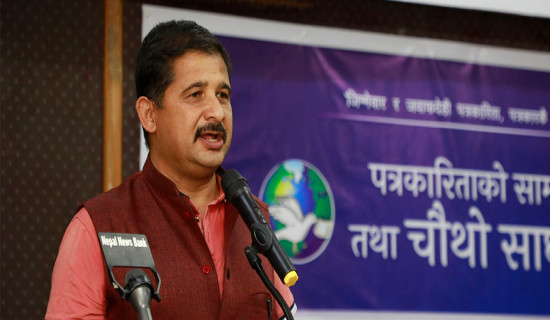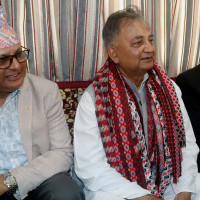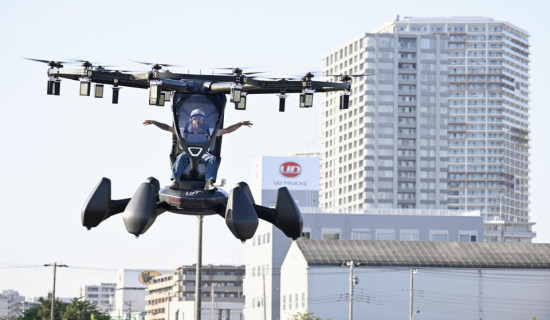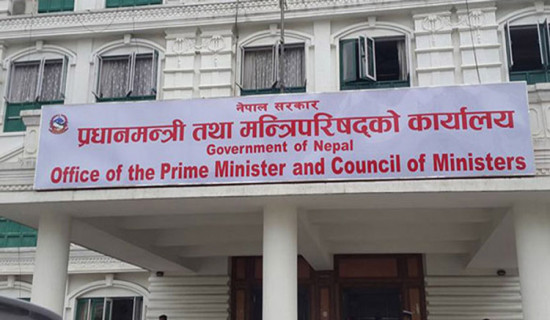- Sunday, 19 May 2024
Female Journalists Want A Greater Space
Nepal's mass media history dates back to 1851 with the founding of 'Gorkhapatra,' a state-owned publication. The paper became a daily in 1961, marking a key milestone in the media evolution. However, the country's modern media era began after the 1951 democratic movement that ended the autocratic Rana regime. Women's involvement in journalism began in 1951 with the launch of the 'Mahila Masik' magazine, focusing on social issues and women's rights.
The Panchayat era (1961–1990) stifled media independence. Yet, the launch of state-run Nepal Television in 1984 created new opportunities. Women were hired as programme presenters and news readers. As democracy returned in the 1990s, Nepal saw a boom in private media, fostering press freedom. This shift encouraged more women to study journalism and join the media workforce. Hundreds of private radio stations emerged after 2000, followed by a rise in private TV stations post-2010.
Despite progress, patriarchal norms and familial responsibilities continue to hinder women to rise and shine in the media sector. According to the Federation of Nepali Journalists (FNJ), women make up only 18.4 per cent of its 13,077 members, indicating a significant gender gap. To achieve balanced representation, Nepal needs to create a more supportive environment to attract, retain, and empower female journalists.
Women journalists in GC
The 123-year-old Gorkhapatra Daily, Nepal's oldest newspaper, has a glorious history and holds a revered place in journalism, thanks to the contributions of numerous dedicated journalists. This publication has played and continues to play a crucial role in reflecting society's evolution over the years. Notably, in 1961, Gorkhapatra employed some of the earliest women journalists in the country, paving the way for gender diversity in the newsroom.
Currently, around 20 women journalists work at Gorkhapatra Corporation (GC), a relatively small number compared to their male counterparts. Overall, the participation of women journalists has been limited, with only a handful having served in editorial positions within the newsroom. This disparity needs to be addressed, and all publications under GC should strive to recruit more women journalists to promote gender equality. Previously, women journalists were often confined to soft news beats, reinforcing stereotypes. However, this has changed significantly. Today, women are breaking barriers by successfully covering challenging issues like politics, crime, and economics. Many women journalists have reportedly faced obstacles in their professional growth, hindering their ascent to higher roles such as editor and chief editor, partly due to deep-rooted gender biases. This inequality must be ended so as to promote inclusive climate for the female scribes.
While GC has provided some flexibility to women journalists in managing office duties, allowing them to balance family and work more efficiently, there is room for improvement. GC should continue to adopt and enhance flexible and motivating policies for women journalists, aligning with global best practices and upholding the rights of women in journalism. Currently, there is only one female journalist in the editorial team of Muna, monthly magazine for children under GC. However, if equal and motivating policies for female journalists are implemented, more women can rise through the ranks. By addressing the stalled career growth and providing fair opportunities, we can expect to see female editors within the next 10 to 15 years.
Over the past decade, the rise of various media platforms has led to a gradual shift, liberating the media from stereotypes and providing equal opportunities for women. In Nepal, there's a growing belief that to truly change the gender narrative, more women must be involved in media content production, pushing for a stronger female presence in the media landscape. There is a noticeable presence of women serving at high posts as secretary, section officers, information officers in government offices, communication and information officers in private organisations, NGOs/INGOs and the United Nations. This positive trend has led to a transformation in news sources, amplifying more female voices.
However, more efforts are needed to achieve better working conditions for women journalists and address serious issues such as mistreatment, gender-based violence, and inequality faced by women. While some articles and research highlight crimes against women, there remains a need for the media to consistently prioritise women's issues, voices, and empowerment in their coverage and employment practices.
Nepal's media landscape struggles with gender inequality, with policies that are not women-friendly acting as barriers to female journalists' participation. Though state-owned media must implement government gender policies, private media should do more, especially since most women journalists work in private outlets. The underrepresentation of women in key roles is concerning, with even fewer in decision-making positions like editors or publishers. This disparity is rooted in male dominance, social pressures, and economic challenges. To bridge this gap, private media must encourage gender diversity and create a more inclusive environment.
Meaningful participation
Women's meaningful participation in media is crucial for a truly democratic society, as it ensures diverse voices are heard and perspectives are valued. To empower women in journalism, comprehensive policies and women-friendly human resource practices are essential. These should encompass flexible work arrangements, anti-harassment and anti-discrimination measures, provisions for work-life balance, and a broader culture of inclusivity.
As Nepal's oldest media organisation, GC can lead by example by implementing initiatives to support career growth and provide equal opportunities for female journalists. This could include timely promotions, training programmes, awards, leadership development, fellowships, and networking opportunities both nationally and globally. GC should clearly enforce policies that support women's career development, such as equal pay for equal work, safety measures, and anti-discrimination guidelines.
GC must create mechanisms to keep women engaged and help them build their careers, addressing the challenge of retention. The GC can lead the way by promoting gender balance in newsrooms and encouraging female journalists to take on various roles and move to leadership rung. GC's proactive approach in this regard will also inspire for other media houses to follow suit.
(Rijal is a journalist at The Rising Nepal.)




-square-thumb.jpg)


_20211211131547-square-thumb.jpg)









